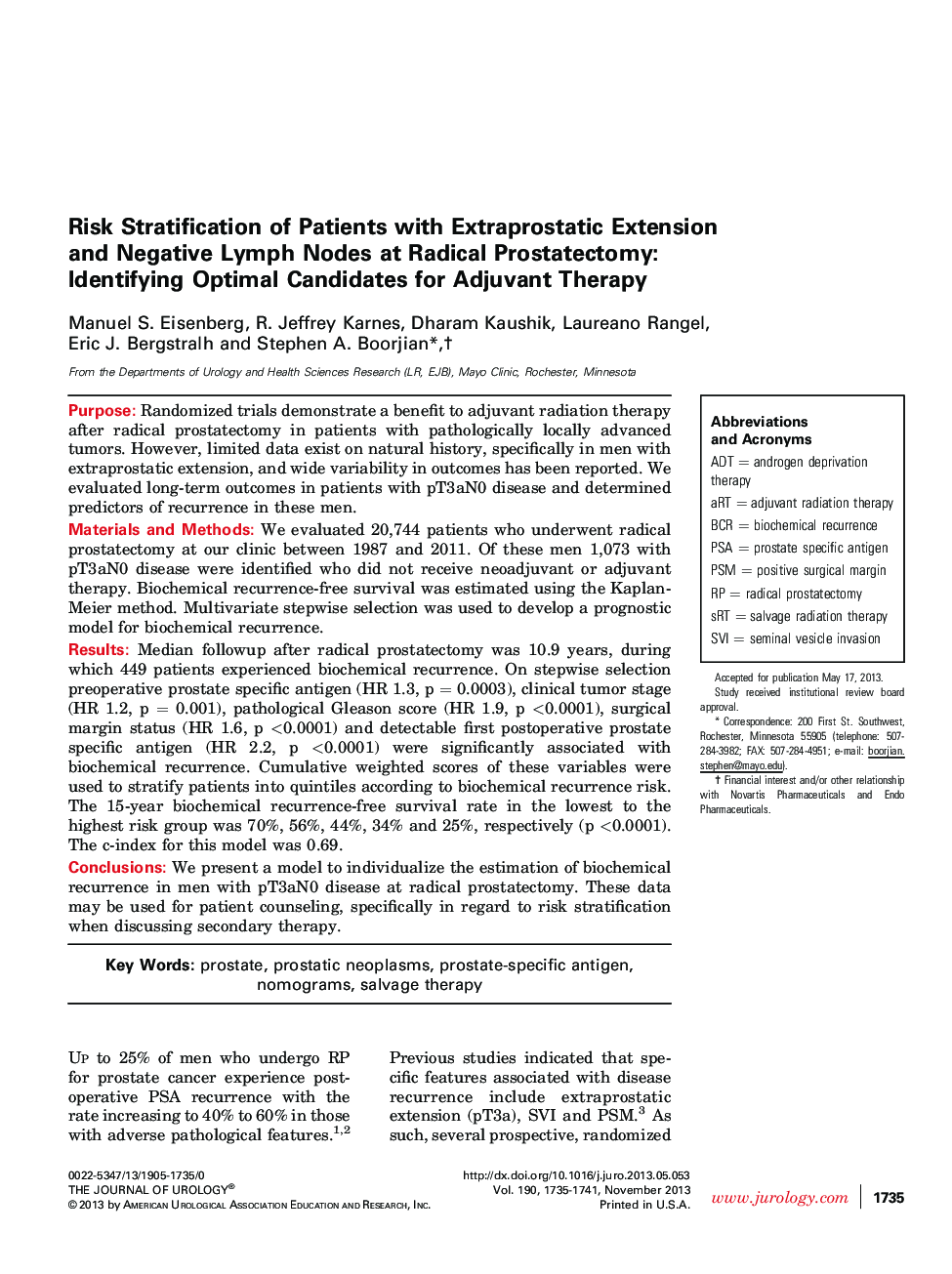| کد مقاله | کد نشریه | سال انتشار | مقاله انگلیسی | نسخه تمام متن |
|---|---|---|---|---|
| 3861822 | 1598912 | 2013 | 7 صفحه PDF | دانلود رایگان |

PurposeRandomized trials demonstrate a benefit to adjuvant radiation therapy after radical prostatectomy in patients with pathologically locally advanced tumors. However, limited data exist on natural history, specifically in men with extraprostatic extension, and wide variability in outcomes has been reported. We evaluated long-term outcomes in patients with pT3aN0 disease and determined predictors of recurrence in these men.Materials and MethodsWe evaluated 20,744 patients who underwent radical prostatectomy at our clinic between 1987 and 2011. Of these men 1,073 with pT3aN0 disease were identified who did not receive neoadjuvant or adjuvant therapy. Biochemical recurrence-free survival was estimated using the Kaplan-Meier method. Multivariate stepwise selection was used to develop a prognostic model for biochemical recurrence.ResultsMedian followup after radical prostatectomy was 10.9 years, during which 449 patients experienced biochemical recurrence. On stepwise selection preoperative prostate specific antigen (HR 1.3, p = 0.0003), clinical tumor stage (HR 1.2, p = 0.001), pathological Gleason score (HR 1.9, p <0.0001), surgical margin status (HR 1.6, p <0.0001) and detectable first postoperative prostate specific antigen (HR 2.2, p <0.0001) were significantly associated with biochemical recurrence. Cumulative weighted scores of these variables were used to stratify patients into quintiles according to biochemical recurrence risk. The 15-year biochemical recurrence-free survival rate in the lowest to the highest risk group was 70%, 56%, 44%, 34% and 25%, respectively (p <0.0001). The c-index for this model was 0.69.ConclusionsWe present a model to individualize the estimation of biochemical recurrence in men with pT3aN0 disease at radical prostatectomy. These data may be used for patient counseling, specifically in regard to risk stratification when discussing secondary therapy.
Journal: The Journal of Urology - Volume 190, Issue 5, November 2013, Pages 1735–1741